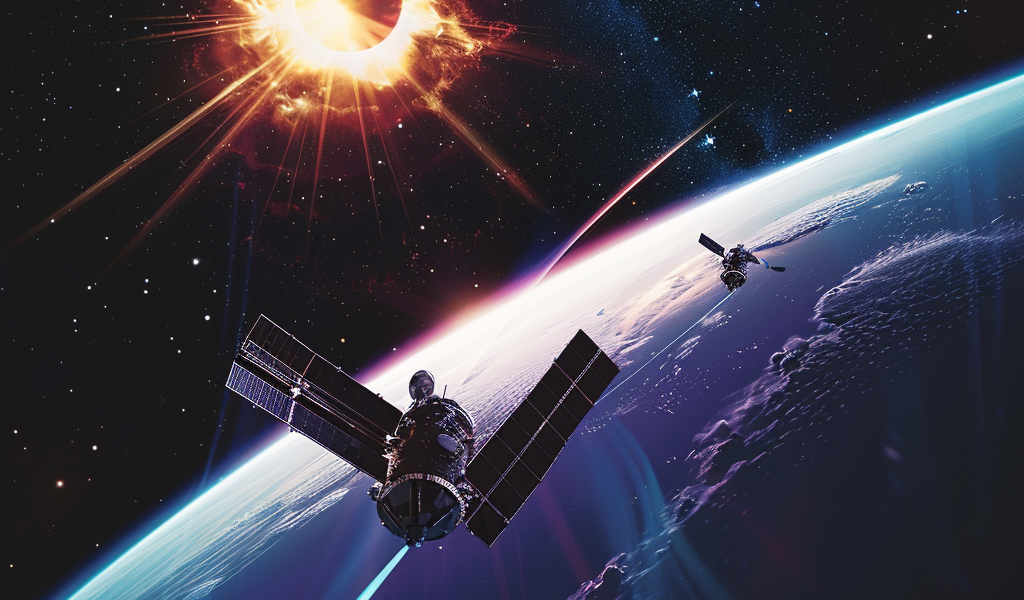The European Space Agency (ESA) is gearing up for a groundbreaking space mission that aims to create total solar eclipses on demand. Scheduled for launch in the coming weeks, the Proba-3 mission will utilize a pair of robotic satellites to simulate the phenomenon of a solar eclipse, thereby enhancing our understanding of solar activity and its effects on technology on Earth.
The innovative mission involves two satellites flying in close formation around the Earth, connected by advanced laser systems and light sensors. One of the satellites will block the sun’s light from reaching the other, effectively generating solar eclipses that can last for several hours. This unique capability will allow scientists to conduct in-depth studies of the sun’s corona, the outer atmosphere that becomes visible during a total eclipse.
ESA scientists believe that the Proba-3 mission will not only deepen our knowledge of solar phenomena but also provide insights into how solar activity can disrupt technologies such as power grids and GPS systems. The data collected during these artificial eclipses could lead to better predictive models for solar storms, which can have significant impacts on Earth.
According to ESA, the Proba-3 mission is set to act as a pathfinder for future formation flying missions in space. The technology developed for this mission could be applied to various scientific endeavors, including the study of gravitational waves, exoplanets, and black holes. This potential for broader applications underscores the significance of the Proba-3 mission within the field of space exploration.
Solar physicist Francisco Diego from University College London commented on the ambitious nature of the project, stating, “This is an extraordinarily promising technology. It is also highly technically challenging. Getting it right will not be easy, but it will be highly rewarding.” The complexity of the mission lies in maintaining the precise formation of the two satellites, which will be positioned just 144 meters apart in orbit.
The success of the Proba-3 mission hinges on the development of sophisticated sensors that will keep the satellites locked in place with an accuracy of less than one millimeter. This level of precision is essential for ensuring that one satellite can effectively cover the sun from the perspective of the other, creating the desired eclipse effect.
As project manager Damien Galano explained, “When the two satellites are in exactly the right orbit, one will release a disk that will exactly cover the sun as seen from the second satellite and so create eclipses that will last for up to six hours a day.” This capability will allow scientists to gather unprecedented data about the sun’s behavior and its impact on Earth.
On our planet, total solar eclipses occur when the moon passes directly in front of the sun, obscuring its light and revealing the solar corona for observation. However, such events are relatively rare, occurring on average every two years at any given location. The Proba-3 mission will enable scientists to conduct solar observations at will, eliminating the limitations imposed by the sporadic nature of natural eclipses.
The implications of this mission extend beyond solar studies. The technology developed for Proba-3 could pave the way for future missions that require precise formation flying, allowing for more complex observations of celestial phenomena. As space agencies continue to explore the cosmos, the advancements made through the Proba-3 mission could play a crucial role in shaping the future of space science.
The Proba-3 mission represents a significant leap forward in our ability to study the sun and its effects on Earth. As the launch date approaches, scientists and space enthusiasts alike are eager to see the results of this innovative endeavor, which promises to enhance our understanding of solar dynamics and their implications for life on our planet.
In summary, the ESA’s Proba-3 mission is set to revolutionize solar studies by creating artificial solar eclipses. This ambitious project showcases the potential of advanced satellite technology and its applications in space science, ultimately contributing to our understanding of the universe and the forces that shape it.





